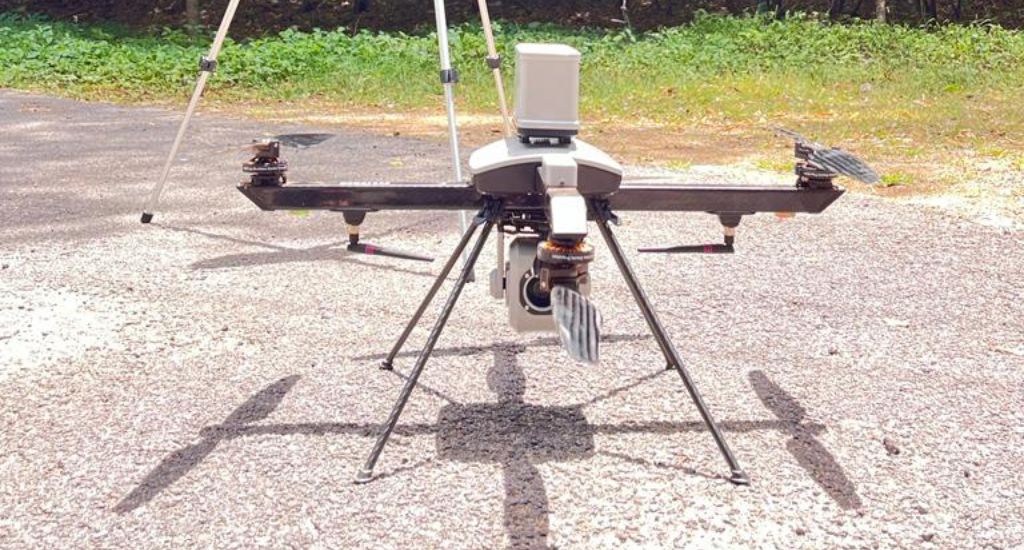With a whir, drones whoosh out and zip through the skies for their nightly run, direct the heat-seeking devices into the canopy, and scan the lush landscape to monitor movements of elephants. It was quiet, if not for the faint buzzing of the tiny flying machine. The object of its mission: the elephants of Nagarhole National Park and Tiger Reserve in Karnataka.
The forests of Nagarhole whisper ancient secrets and cradle untamed wonders. But the drone cloaked in cutting-edge technology pierces the shroud of darkness that veils the movements of its famous inhabitants.
The tale begins with a gift, an invaluable contribution to the guardians of the park, which has three sub-divisions — Hunsur, Nagarahole and Metikuppe — and eight ranges. This drone, valued at approximately Rs 22 lakh, was donated by Phaneesh Murthy of PM Ventures and Tiger Ramesh of Magnasoft in December last year. The Mumbai-based drone manufacturer, IdeaForge, has been providing technical support.
The thermal drone hovers in a range of 2-3km, with the capacity to traverse more if required. A single charge sustains it for 40 minutes of continuous operation, while three backup batteries stand ready to serve.

Safety too is paramount, granting foresters the luxury of maintaining a safe distance of 500 metres to 1km between themselves and the animals.
In the light of day, foresters can perch atop trees and hills, gaining a vantage point over the landscape to observe an animal’s potential route. But as night descends, this exercise becomes elusive and treacherous.
Also Read: Novel elephant alarm: Bengal villagers turn to the bottle
Amongst the many challenges of the terrain, one stands out — the unpredictable nature of elephants. “With thermal drones, we can maintain distance and follow along,” explained deputy range forest officer Yogeshwari, who was one of seven skilled pilots to get trained to navigate the drone through the night.
It’s a delicate balance that ensures both parties remain unharmed, whether navigating water bodies or fields of sugarcane.
A shot in the dark
Smarter, faster and cheaper — drones have been helping forest officials track animals without disturbing them.
“We have previously used many drones in the daytime. But elephants move significantly more at night,” Yogeshwari said.
The thermal drone, unlike its daytime counterparts, captures the heat signatures of these majestic beasts, revealing their presence even in the shroud of darkness. Nagarhole has about 1,700 elephants and 125 tigers.
Also Read: Stepping into the tiger’s reserve

Aloft in the night, the drone ensures swift alerts if the herd ventures too close to human settlements. In Ramanagara, a land surrounded by hills and highways, Yogeshwari found the thermal drone to be her guiding light, leading the giants away from human habitation.
Back in January, as the dawn of a new year bathed the land in soft light, the drone played a vital role in the capture of a leopard, a relentless predator that had claimed two lives in swift succession in Horalahalli village of T Narasipura taluk in Mysuru.
Since that day, the drone has been crisscrossing various divisions, tracking the silent footfalls of elusive wildlife.
“We are currently using it to track leopard and elephant movements, mainly,” said Harshakumar Chikkanaragund, deputy conservator of forest, Nagarhole division.
In the eyes of Chikkanaragund, the thermal drone assumes the role of a silent arbiter. It offers a broader perspective, a bird’s-eye view that precedes a critical decision — to capture or to observe.
Also Read: The elephant and the honey bee
When an animal strays into human territory, it marks a deviation from its natural behaviour. As Harshakumar pondered: “We need to understand why it is behaving differently. Is there a calf or a young one with it?” In this contest of life and death, understanding the why is just as important as the what.
Drones to monitor elephants: Future tech in wildlife conservation
Yogeshwari too uncovered hidden truths. She discerned a newfound wisdom in the behaviour of elephants when they safeguard their young. “Safety is paramount to them when there are calves in the herd, so they move very slowly,” she said.

Yet, like any technological marvel, the thermal drone has its limitations. During bouts of high wind pressure, it succumbs to nature’s wrath. Beyond tracking wildlife, the forest department envisions its use in fire detection. The heat signatures of fires could be swiftly identified, and the affected areas pinpointed.
But the journey into the heart of technology has just begun for Nagarhole division. An ambitious pilot project looms on the horizon, one that harnesses the power of AI to identify animals captured by high-resolution cameras. The foresters will gain the ability to identify species, location and time, ushering in a new era of conservation.
Also Read: ‘Poaching of rhinos: You cannot save animals only with guns’
The lead image at the top shows the drone used to observe wildlife at night at Nagarhole National Park and Tiger Reserve in Karnataka. (Photo by Amulya B)
Amulya B is a multimedia journalist, writer and translator based in Bengaluru. Her stories explore the intersection of culture, society and technology. She is the winner of Toto Funds the Arts for creative writing and Laadli Award. She was a Rural Media Fellow 2022 at Youth Hub, Village Square.








